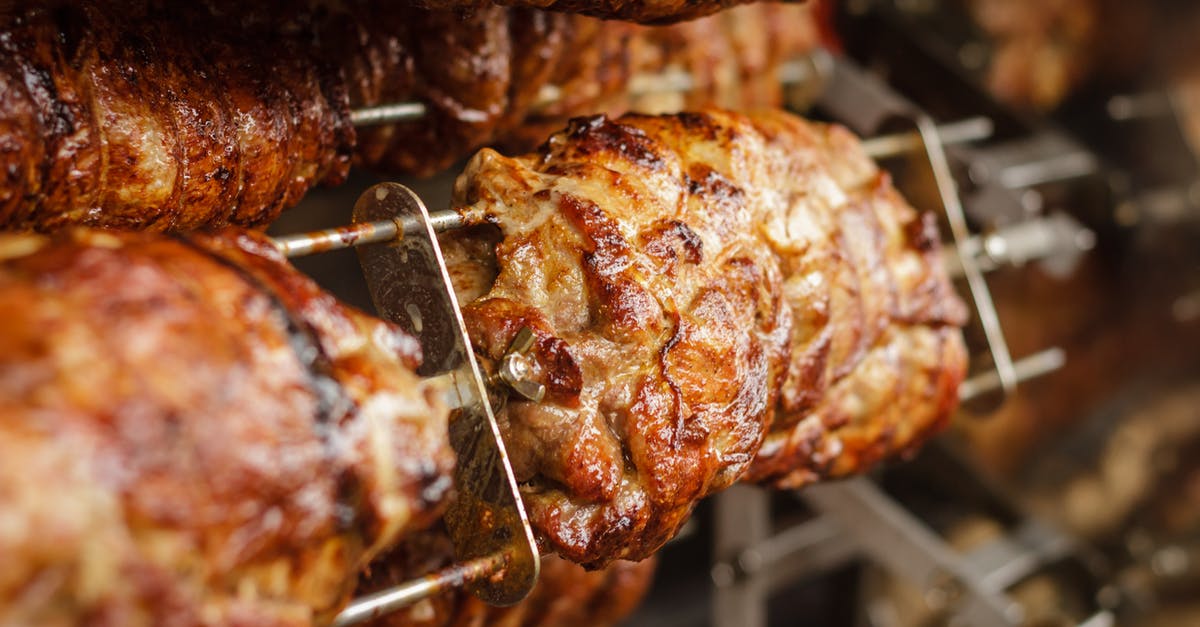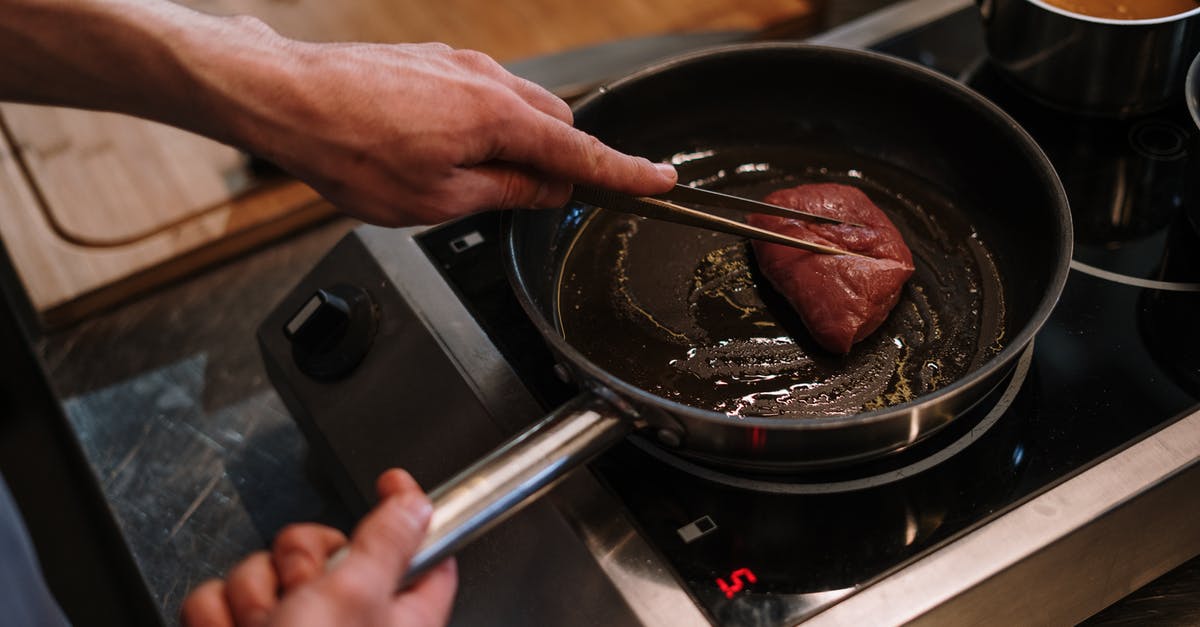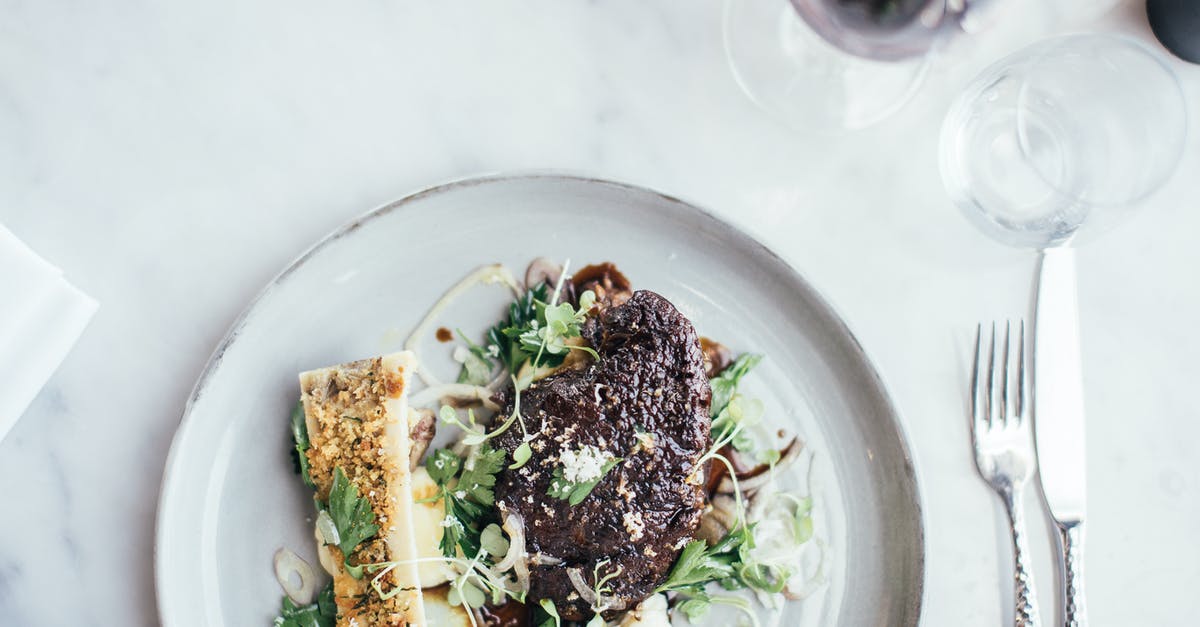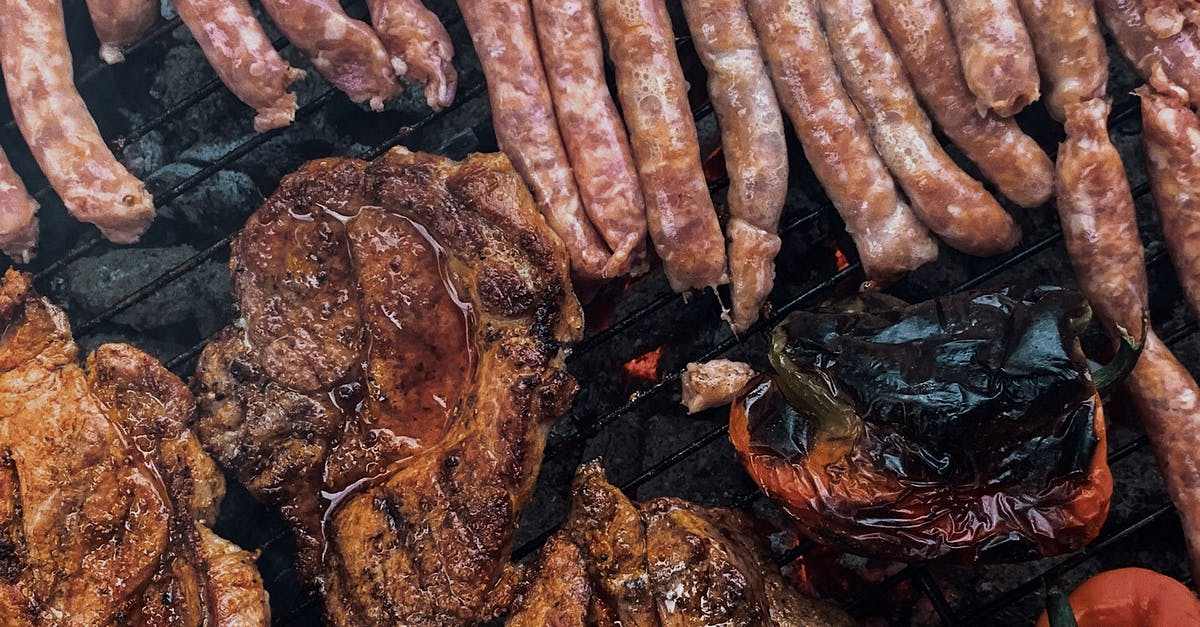What makes a moist steak (or roast)?

When cooking steak on my grill it seems that even at a steady temp of 350 Degrees F and for 20 minutes the steak seems to change in the way of texture. I get my meat from the same Hanaford and I always get the 1 Inch cut. So what makes a moist steak. Does it have to do with the weather outside when I'm grilling?
Best Answer
There is no single answer to this question. Instead, a number of factors (not including the weather) affect the perceived tenderness or moistness of a steak or other cut of meat.
Overview
There are two major factors that effect the perceived moistness of a steak or other cut of meat:
- The amount of connective tissue. The more connective tissue the meat has, the tougher and chewier it will be, at least until the collagen that composes the connective tissue is converted to gelatin
- The temperature to which the cut is cooked. The higher the temperature, up to about 165 F, the more different types of proteins are denatured and coagulated, squeezing out moisture, leading to a dryer, tougher mouth feel.
Additionally, some minor factors contribute to or enhance perceived tenderness or moistness:
- Cutting the meat against the grain enhances the perception of tenderness.
- Marinating in an acid or enzymatically active marinade may enhance tenderness
- Mechanically processing, cutting, or pounding the meat (as in a cube steak) to disrupt its fibers can enhance tenderness.
Connective Tissue
The more an animal uses a muscle, the more connective tissue that muscle will contain. For example, the shoulder of the animal is usually worked very hard (it has to keep the animal standing up) for pigs and cows, so it has a lot of connective tissue.
Other muscles are used rarely, such as the tenderloin, and don't develop very much connective tissue.
The connective tissue is composed of a protein called collagen, which is tough and rubbery, and makes cuts high in it seem much tougher than those which are not.
However, with certain types of cooking, collagen can be converted to gelatin, and convert from being tough to being unctuous and soft.
Temperature
As the temperature in the steak rises, more and more proteins tighten and denature, squeezing out moisture, resulting in a drier, tougher mouth feel.
Various groups of proteins denature at different temperatures, so the higher the internal temperature, the more moistness will be squeezed out, and the drier and tougher the steak will seem.
By the time the cut reaches about 165 F, all of the proteins are denatured, and it is fully well done, and as tough as it will be.
According to Amazing Ribs:
122°F - Myosin protein in mammal meat begins to denature.
130-135°F - Target temp for medium rare lamb chops and beef steaks, the temperature at which they are at optimum tenderness, flavor, and juiciness.
130-140°F - Fats begin to melt and render (liquefy). This is a slow process and can take hours.
140°F - Collagens begin to contract and squeeze juice from within muscle fibers into the spaces between the fibers and out to the surface.
140°F - Myoglobin denatures rapidly and red or pink juices begin to turn clear or tan and bead up on the surface.
150°F - Actin protein begins to denature making meat tougher and drier.
155°F - Well done for most meats. Most (but not all) bacteria killed in less than 30 seconds but spores can survive to much higher temps.
High Connective Tissue Cuts
When cuts are high in connective tissue, the same toughening and drying that occurs in low connective cuts happens as the internal temperature rises to about 165 F.
However, starting at about 170-180 F, a new process begins to engage: the collagen (the very protein that made these cuts tougher to start with) begins to transform in the presense of water into gelatin, a different protein.
The gelatin lubricates the meat, and gives it a newly unctuous and moist mouth-feel, despite being very well done.
It takes time for gelatin conversion to occur: it is not enough to simply bring the internal temperature to 180 F. It has to stay there for several hours for the conversion to have enough time to take place.
This gelatin conversion is what makes slow cooking methods like braising and barbecuing so effective for tough cuts of meat. They are cooked until quite well done (when they would be extremely tough), but then the conversion of the collagen to gelatin makes them much softer, and unctuous, so that they are again perceived as moist and tender.
Sadly, it will not work on cuts that were fairly tender to begin with, as there is little collagen to convert to gelatin.
Slicing Against the Grain
Additionally, while a minor factor, the way the meat is cut into bite sized portions also effects the perception of toughness.
Muscles are bundles of cells that are aligned in the same direction, like a bundle of straws. They are very, very strong in the direction that the fibers align (along the straws), but not as strong against that direction (across the straws).
If sliced against the direction of the grain of the meat, so that the straws are cut in half, the the impression is that the meat is more tender.
For example, in fajitas, the traditional flank steak or skirt steak is cooked to no more than medium rare to medium (to minimize the toughness from cooking), and then sliced across the grain to make it seem more tender.
Marinades
Some marinades, if they have strong acids and are used long enough, or if they have active enzymes that can break down proteins (such as from pineapples or papaya or kiwi) can soften meat.
If over done, this can leave them mushy and unpalatable.
Mechanical Processing
Using a meat mallet or jacquard to help break down connective tissue and the structure of the muscle (as in a cube steak, or as is often done for chicken fried steak) can help make some tough cuts more tender.
Resting
For many years, common and accepted wisdom was that after cooking, you needed to let a steak rest for several minutes before cutting into it, so that its juices would be retained.
There is some evidence that this may not be completely true.
For the argument that resting is not required, and considerable details regarding the arguments for and against resting, see the article at Amazing Ribs.
Weather
Not a factor.
Pictures about "What makes a moist steak (or roast)?"



Quick Answer about "What makes a moist steak (or roast)?"
Overview. There are two major factors that effect the perceived moistness of a steak or other cut of meat: The amount of connective tissue. The more connective tissue the meat has, the tougher and chewier it will be, at least until the collagen that composes the connective tissue is converted to gelatin.What makes steak moist?
Fat is a source of energy that is stored in muscle tissue. When fat is heated, it melts and lubricates the muscle fibers in the meat, helping to keep it moist.How do I make my steak tender and moist?
Over a low heat, add meat to a few tablespoons of water, broth or other liquid. Simmer for a few minutes to allow the liquid to penetrate into the meat. Simmering in an acidic liquid, such as vinegar or lemon juice, can tenderize and add flavor as well as moisture.How do you make beef more moist?
As a rule of thumb (for a steak 22mm thick) \u2013 cook 2 minutes each side for rare, 3-4 mins each side for medium-rare and 4-6 mins each side for medium. For well done, cook for 2-4 minutes each side, then turn the heat down and cook for another 4-6 minutes.How to Cook Perfect Roast Beef | Jamie Oliver
Sources: Stack Exchange - This article follows the attribution requirements of Stack Exchange and is licensed under CC BY-SA 3.0.
Images: Pixabay, cottonbro, Dids, Rachel Claire
